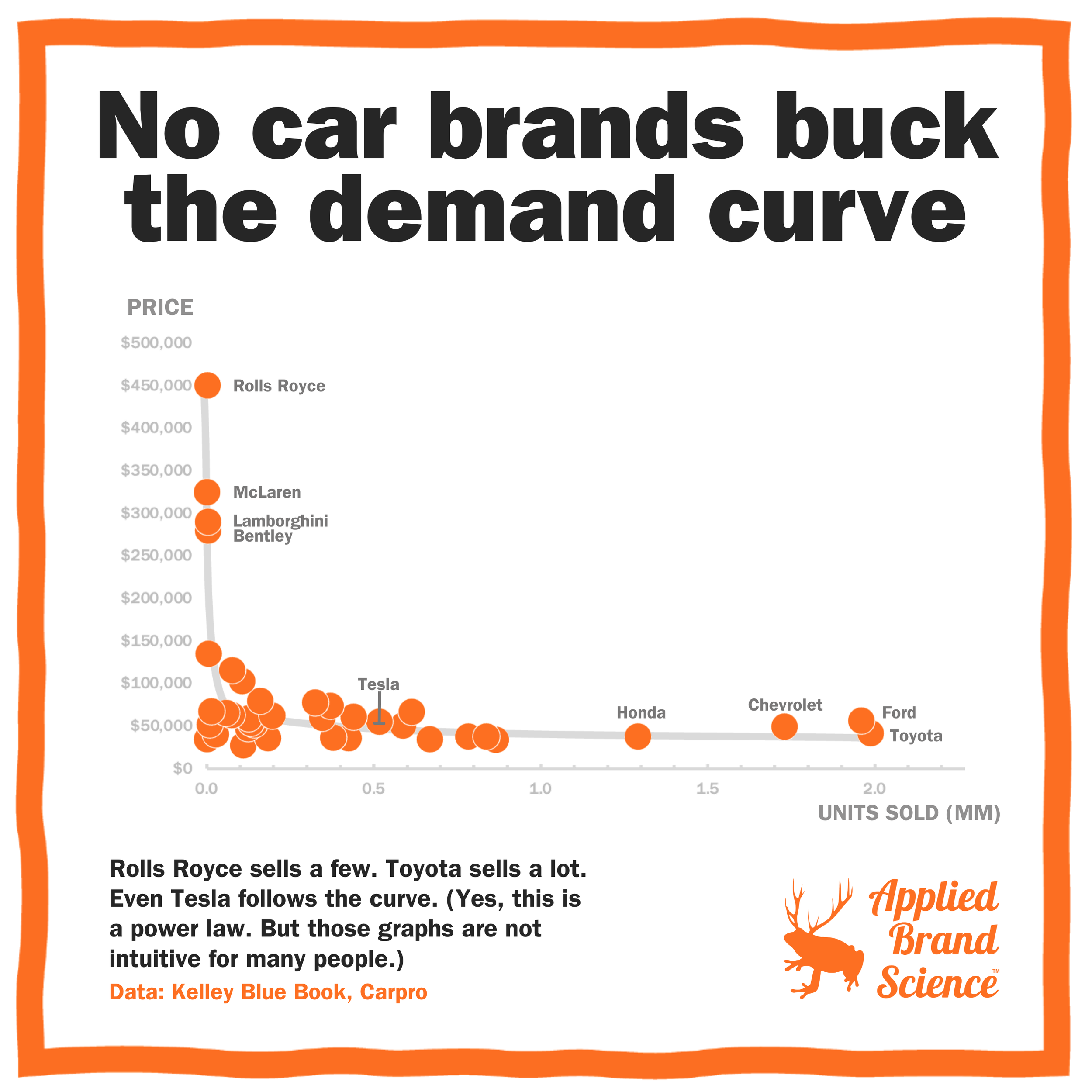Does any car brand buck the Law of the Demand Curve?
Like, can you have a high-priced car that’s also a high-volume car?
It’s one of the oldest truisms in business: if you raise your prices, demand (and thus volume) should go down. It’s the ‘Demand Curve’. Augustin Cournot described it in 1838.
But in these ‘unprecedented times’, does it hold up? Why yes, it holds up remarkably well.
F’rinstance, in the world of vehicles in the US, you see it quite well:
🚙 Expensive cars like Rolls Royce sell very very few.
🚙 High-volume brands like Toyota & Ford sell tons & tons.
🚙 Mid-priced brands sell middle amounts. Even Tesla.
Another category following the laws of brand physics….
[Nerd detour: this is probably a power law & should be shown on log-log axes. But those aren’t intuitive for most people.]
Does low price guarantee high volume? Absolutely not. Mitsubishi, Mini & Fiat sell welllll below their price-points would suggest.
Does high price guarantee low volume? Pretty much. (Paging Lamborghini.)
But there IS wiggle. GMC sells more than expected given its higher average price (probably because of fleet sales, and the fact that the #1 consumer car type in the US is the pickup truck). And Porsche outsells lower-priced Alfa Romeo, Mini, and Fiat. For a host of reasons.
Do those deviations prove the law ‘wrong’? Nope. They just indicate that other mysterious factors are at play: product range. Distribution. History. Etc. It’s like when a falling leaf doesn’t “follow the law of gravity”, maybe it’s because wind resistance matters more.
Some lessons:
🍊 Assume the Demand Curve is a law of nature.
🍊 Assume you won’t create a high-price product that’s also the category volume leader.
🍊 If you see wiggle, look for other factors at play.

